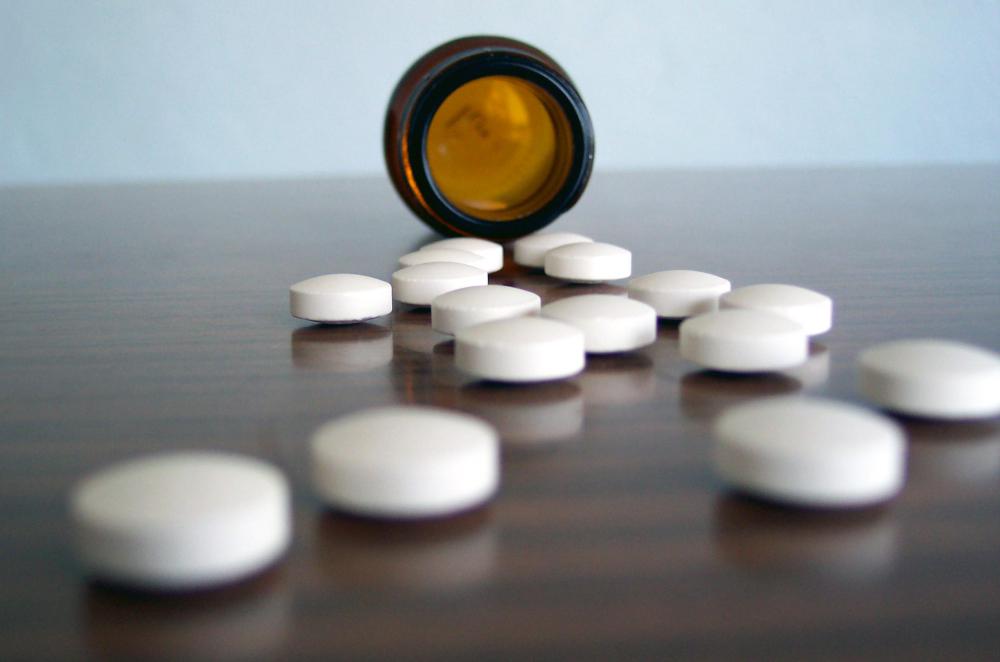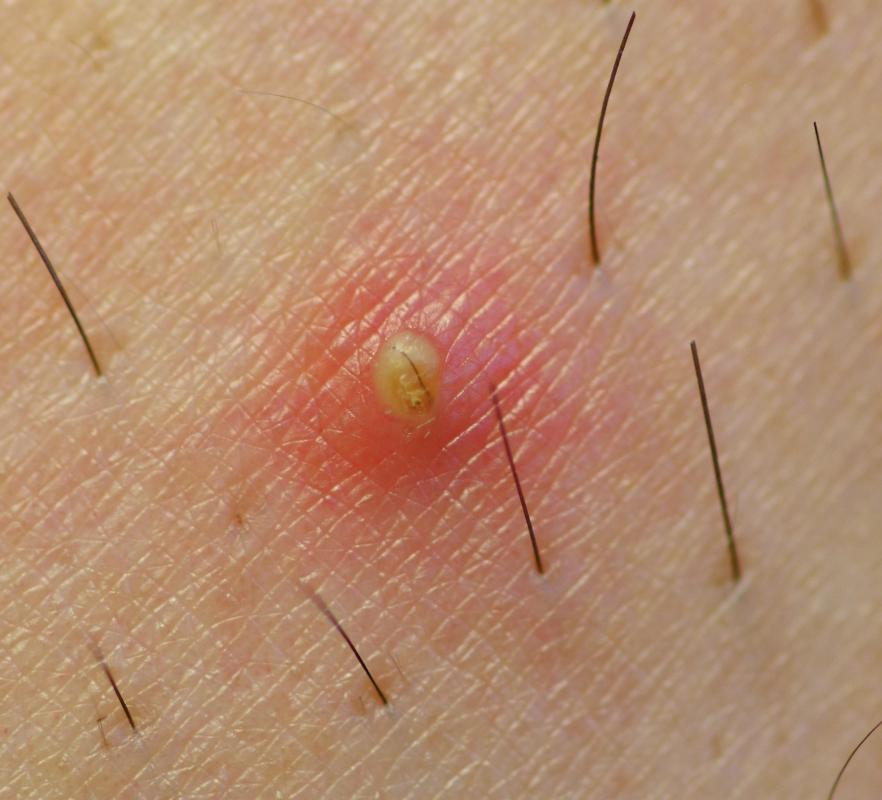At WiseGEEK, we're committed to delivering accurate, trustworthy information. Our expert-authored content is rigorously fact-checked and sourced from credible authorities. Discover how we uphold the highest standards in providing you with reliable knowledge.
What Are the Best Tips for Draining Pus?
Some of the best tips for draining pus include only having it done by a qualified health care provider and monitoring for signs and symptoms of infection in the days following the procedure. Draining pus from an abscess needs to be done under sterile conditions to avoid introducing bacteria into the wound. Although, the procedure for draining pus is typically a simple one, local anesthesia may be necessary, in addition to a numbing preparation. It generally only takes a few minutes and is normally done in the doctor's office.
An infection where pus is present is caused by bacteria, such as the staph organism. In addition to the presence of pus, other signs of infection include redness, swelling, and pain. Red streaks might also be present and may indicate blood poisoning. When these symptoms occur, the health care provider needs to be notified so treatment can be implemented. Treatment for an abscess includes taking antibiotics, draining pus, and taking anti-inflammatory medications to relieve pain and bring down the swelling.

Before the health care provider begins draining pus from the infection, he will typically ask the patient a series of health questions to determine if allergies to medications or antibiotics are present. In addition, the health care provider might also ask the patient about pre-existing conditions such as diabetes. When diabetes is present, delayed wound healing may be a problem, making draining pus from a wound risky. Diabetics frequently suffer from circulation problems that impair healing.

The color of pus is typically yellow or white, but is sometimes green, brown, or slightly pink. Pus is pink when a small amount of blood gets absorbed into the pus, and this is referred to as "blood tinged." A dental infection can also cause pus to collect in the soft tissue. When this occurs, the dentist needs to determine the source of the infection and treat it with oral antibiotics. Extracting the tooth may be necessary to resolve the infection, but this is typically the exception rather than the rule.

After the health care provider has drained the pus, the individual needs to be aware of other symptoms of infection such as fever, chills, joint pain, gastrointestinal upset, and headache. If these symptoms occur, they may indicate a severe infection known as sepsis, which is an infection of the blood. When sepsis occurs, the patient may require hospitalization and intravenous antibiotic treatment.
AS FEATURED ON:
AS FEATURED ON:













Discussion Comments
@SarahGen-- I agree with you. When doctors drain abscesses, they will often use antibiotic powder to prevent an infection or give the patient oral antibiotics. So it's a risk to try it at home.
@literally45-- Most blisters and pimples don't need to be drained though. The body will take care of that on its own. Sometimes draining pus at home can make things worse because you're giving an opening for more bacteria to get in.
If there is some kind of abscess where there is a constant discharge of pus, then that requires a doctor's attention. So I don't think that there is a situation that requires draining pus at home.
It's not always necessary to see a doctor to drain pus. If it's a very small issue like a pimple or an ingrown hair, it can be taken care of at home.
I actually learned how to drain pus from a TV health show. The doctor on the show described it in detail. It can be done at home with a sterile needle, clean cotton swabs and antibiotic cream.
First, the needle has to be sterilized and that can be done by burning the tip before poking a tiny hole in the blister or pimple. Then a clean cotton swab is used to apply gentle pressure on and around the blister to push the pus out. That's about it but the blister has to be washed with soapy water and then antibiotic cream must be applied on it to prevent infection. The process can be repeated if more pus accumulates at the top.
I've been doing this for infected blisters and pimples at home. It has worked out fine. Of course, if there was a serious infection with pus, I would see a doctor. But small things can be taken care of at home.
Post your comments